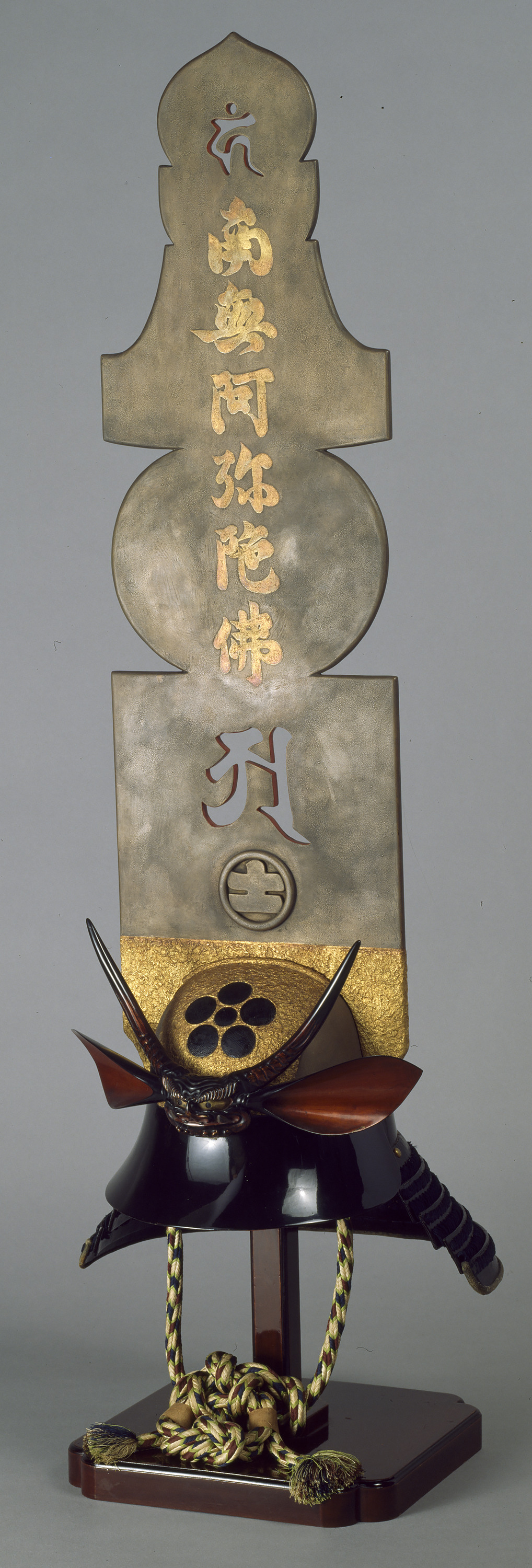- TOP
- Stupa-shaped Helmet with the Characters "Namu Amida Butsu
Overview
Stupa-shaped Helmet with the Characters "Namu Amida Butsu
- Museum No.
- EK185
Showing 1-6 of 1
| Title | Stupa-shaped Helmet with the Characters "Namu Amida Butsu |
|---|---|
| Designation | |
| Artist | |
| Category | Metalwork(E), Armor |
| Country | Japan |
| Period | Edo |
| Century | 18th |
| Year | |
| Quantity | |
| Materials | |
| Dimensions | Hegith 19.5cm 23cm 20.5cm |
| Inscription by | |
| Signature/Seals Etc | |
| Donor | Yonetani Shizue |
This object may be one within a set or the title of a set. To see all objects in the set, perform a Category Search by the Museum Number below, entering numerals only before the hyphen.







A warrior's desire to assert his existence on the battlefield gave rise to helmets of clever and contrived designs (J., kawari kabuto), which came into fashion from the early Momoyama period (1573-1615). They reflect the concept of kabuki, which placed a high value on strangeness and eccentricity.
This helmet, which dates to the later Kyôho era (1716-36), was ordered from master armorers of the Iwai family by Matsudaira Uneme no Shô Sadamoto (n.d.), head of the Imabari fief in Iyo Domain (present day Ehime Prefecture). The stupa-shaped stand protruding from the helmet was carved from a single block of wood, pierced above and below with the Sanskrit six characters, "Namu Amida Butsu" ("Hail, Amitabha Buddha"), and the family crest, consisting of the character, shi, enclosed in a circle, are carved in relief. This design reveals Sadamoto's deep faith in Pure Land Buddhism.
Japan-Edo